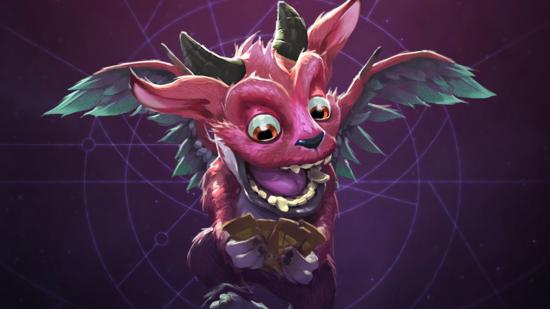If there’s one thing you should know about me, it’s that I’m awful at card games. Hearthstone struggled to get my juices flowing, and The Elder Scrolls: Legends just isn’t for me, so you’re probably wondering why on Earth I’m writing about the arguably even more complex Dota 2 card game spin-off Artifact.
After plugging away for seven hours to learn the basics, and then subsequently losing all but one of my bot games, I was weirdly hooked. With everyone in the office laughing at my inability, Artifact was there, enticing me to prove that I could, in fact, win games and appease my little Imp, who had only come to know that gutting ‘Defeat’ screen.
At ten hours, I began to notice intricacies in the cards I had glossed over before, and started playing more proactively. At 15 hours in, I was able to pinpoint the exact moments that were costing me the game, or the plays that I could have pulled off better. And finally, at 20 hours in, I was implementing thought-out strategies with the Blue-Black Control and Red-Green Brawler decks. I’m still really bad at Artifact, but surprisingly, I’m still playing it.
The key draws here are the three lanes that Artifact commands you to control, which essentially mean you are running three games at once. Each lane features two towers at either end – one for you, one for you opponent – and all you need to do is destroy two of your enemy’s three towers to win.
Read more: Ian’s game of the year is Monster Hunter: World
Simple, right? But I did say this game was complicated, so naturally there’s an alternative way to claim victory: by destroying the tough Ancient that is released when you wipe out a tower.
It’s these differing methods in securing a win that have consistently kept me on my toes, trying to predict my opponent’s strategy, while attempting to stay one or two steps ahead of the game. ‘Attempting’ being the key word for me, there.
Talking of strategy, I should mention there are four different card suits in Artifact, represented by the colours: Red, Green, Black, and Blue. Each suit has its key strengths, calling for different tactics and playstyles. This really threw me at first, trying to understand what worked well together, but the process of learning and trying new things kept me hooked until I got there.

When it comes to deck building, only time will tell what the first meta will be, but having a real-world card trading economy pushes players to fully invest in the cards they want and create bespoke decks tailored to their playstyle. On the flip side, if it doesn’t work out, you can always follow the market and cash out your cards when they’re in high demand. That’s what I call a win win. Insofar as I’m familiar with what a win is.
Related: The best Artifact decks for beginners
Valve is well-known for creating games that have not only stood the test of time, but also become a rite of passage all PC gamers must play through. Artifact is certainly one of mine. Despite those soul crushing defeats, it’s a thrilling, complex, and highly competitive game that’ll keep me coming back until I’ve mastered it, and then mastered it some more.
